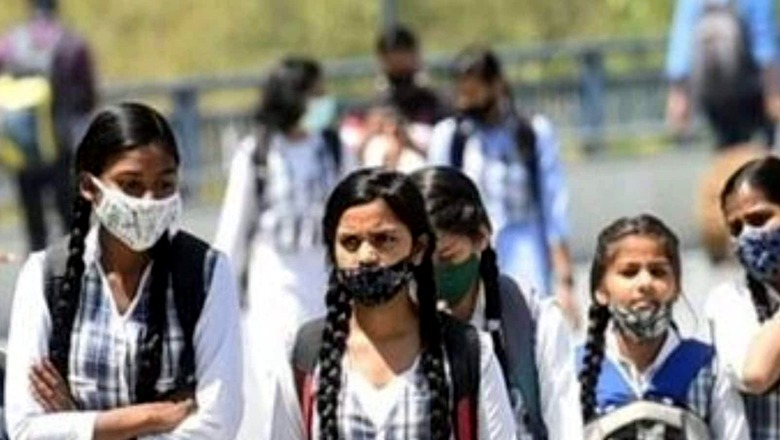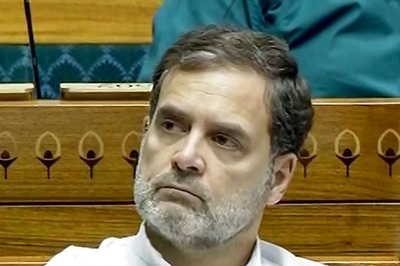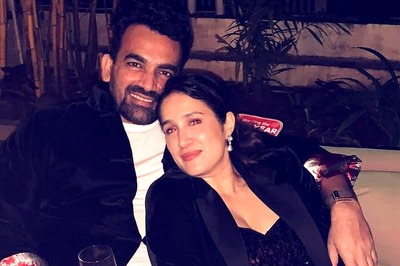
views
Recently, the website of the Office of the Commissioner for Linguistic Minorities, which had disappeared like sunken ship a few years ago, resurfaced on the Internet. For those uninitiated, the aforesaid office was created under the Constitution (Seventh Amendment) Act, 1956 based on the recommendations of the States Reorganisation Commission (SRC). Instituted under Article 350B of Constitution, it is authorised to “investigate all matters relating to safeguards provided for linguistic minorities under this Constitution” and report to the President. These reports need to be laid before each House of Parliament, and sent to governments of the states concerned.
In popular imagination, minorities could be notified on the basis of religion only. That, however, is a product of ‘secularist’ trends in Indian politics. A closer reading of the Constitution of India would disabuse that myth. The Constitution makers did not discriminate between the linguistic and religious minorities while framing Articles 29 and 30. In fact there has been a greater emphasis on the linguistic minorities. The Constitution never defined religious minorities, and such identification was done as recently as 23 October 1993 to meet the provisions of the National Commission for Minorities Act, 1992.
It is true that the Constitution did not also define linguistic minority. However, the groups or collectives of individuals residing in a territory of India or part thereof having a distinct language or script are considered linguistic minorities. The Government of India, in coordination with state governments, had created certain safeguards/facilities for them even before the Articles 350A and 350B were inserted into the Constitution.
This writer has personally benefited from the safeguards available for the linguistic minorities. He studied in a government-aided school in New Delhi established for the Bengali community. This allowed him to master his mother tongue in all its aspects to the extent of creating original literary pieces in it. Tamil, Telugu, Malayalam, Marathi educational institutions in the national capital had also been beneficiary of same policy. Article 350A puts the obligation on the State and local bodies to provide primary education in mother tongue.
It was strange that a Constitutional body should go missing in the Web space in a Digital India. Two years ago, the reply to this columnist’s application to the Ministry of Minority Affairs under Right to Information Act, 2005 confirmed his worst fears. The reply dated December 3, 2020 revealed that the institution was dysfunctional on ground level for the last few years. There had been no full time Commissioner since Prof Akhtarul Wassey, appointed by the previous UPA government, retired in April, 2016. No report of the organisation had been sent to the President of India to be placed in either House of Parliament since May 2016 in defiance of the Section 350B (2) of the Constitution. The headquarters of the organisation had been relocated from 40, Amar Nath Jha Marg, Allahabad to Jam Nagar House on Shahjahan Road in New Delhi (in 2015). However, this ‘centralisation’ appears to have been of little productive use.
The new website is an advertisement of non-peformance of the organisation is the last six years. The 52nd Report of the Commissioner for Linguistic Minorities covering the period between July 2014 and June 2015 was the last to be presented to the President of India in 2016. While its preceding reports like the 50th and 51st reports had been appearing annually, the practice stopped thereafter.
While the linguistic minorities were left without a guardian institution, the organizations meant for religious minorities were working in full swing. Take for example the National Commission of Minorities (NCM). There are at present five members including the Chairperson Iqbal Singh Lalpura. While the writer could not locate any recent Annual Report on its website, regular meetings of the Commission has apparently been taking place as evident from their minutes. However, the Annual Report of the Ministry of Minority Affairs (2022) affirms that the Annual Reports of NCM up to 2020-21 have been submitted.
The National Commission for Minority Educational Institutions remained similarly active. Constituted under the NCMEI Act, 2004 it carries the legacy of the UPA-I government when there was an upsurge to pander to the religious minorities, especially the Muslims. The Sachar Committee, Rangnath Mishra Commission, and the Ministry for Minority Affairs were products of the same vintage. Notwithstanding the fact that Articles 29 and 30 apply equally to institutions of religious and linguistic minorities, the linguistic minorities were kept outside the purview of the NCMEI Act, 2004. Safeguarding the rights of linguistic minorities actually boils down to their educational institutions.
Against the popular belief, the Modi government has not abridged the facilities extended to religious minorities but augmented them. As per a reply to an unstarred question (No.4237) in the Lok Sabha on 18 July 2019 the budget of the Minority Affairs Ministry was increased from Rs 3,511 crore to Rs 4,700 crore between 2013-2014 and 2019-20.
While addressing the 80th meeting of the Central Wakf Council in New Delhi on 12 June 2019 the then Minister of Minority Affairs Mukhtar Abbas Naqvi that while previous governments in the Centre had identified a maximum of 90 districts in the country for minority communities’ development programme, the Modi government increased its ambit to 308 districts of the country. He also apprised that for the first time since independence the government decided to provide 100 percent funding to develop schools, colleges, ITIs, polytechnics, hospitals, multi-purpose community hall “Sadhav Mandap” on Wakf land under Pradhan Mantri Jan Vikas Karyakram.
The Nai Udaan Scheme to help candidates from religious minority communities to have cleared Prelims conducted by UPSC/SSC and Public Service Commissions of various states was formulated by the UPA government in its last year in office. The Modi government not only took it up earnestly but increased the quantum of support. During the FY 2021-2022 an actual expenditure of Rs 7.97 crore was made against an allocated budget of Rs 8 crore thus providing financial help to 1,641 candidates, highest for any year since the inception of the scheme.
In 2015-16, the Modi government came up with Naya Savera scheme to provide free coaching to students from religious minority community with empanelled coaching institutions. The budget for FY 2021-22 was Rs 79 crore out of which Rs 18.22 crore were released to the institutions by 31 December 31, 2021.
While Narendra Modi was the Chief Minister of the state, the Gujarat government that opposed the UPA governments pre-matriculation scheme as “arbitrary and discriminatory” in its affidavit filed before the Supreme Court. The affidavit argued that the Sachar Committee was neither constitutional nor statutory. However, by the time Narendra Modi became the Prime Minister (2014), the Sachar Committee Report (2006) had already become a fait accompli in the Centre. Out of its 76 recommendations, 72 had already been accepted by the government. The Modi government chose to continue the UPA policies, only increasing the quantum of budget, as mentioned above.
Urdu is possibly the only language, apart from Hindi which is Raj Bhasha (Official Language), to receive significant central grant. There is an Urdu Promotion Council established as an autonomous body under erstwhile HRD Ministry (now Education Ministry in 1996. Incidentally, it also promotes Arabic and Persian. On 2 October 2019 then HRD Minister Ramesh Pokhriyal ‘ Nishank’ had proudly announced that the annual allocation for Urdu Promotion Council had been nearly doubled from Rs 45 crore in FY 2013-14 to Rs.84 crores in FY 2019-2020. It is needless to say Urdu today is language of the Muslims alone, though one might point out its shared past in the colonial period in the states like Punjab, Delhi and United Provinces (Uttar Pradesh) before it became rallying point for Pakistan movement. Therefore, promoting Urdu at national level is indirectly aiding a religious minority committee only.
The devil is in the details. When it comes to schemes and institutions for the benefit of religious minority community (Muslims, in particular), the present government is continuing and expanding the policies of previous governments that were often accused of pandering to the minorities. However, helping the linguistic minorities, which might have actually helped the mainstream nationalism, has been given a short shrift.
The writer is an independent researcher and the author of the book ‘The Microphone Men: How Orators Created a Modern India’. The views expressed in this article are those of the author and do not represent the stand of this publication.
Read all the Latest Opinions here


















Comments
0 comment